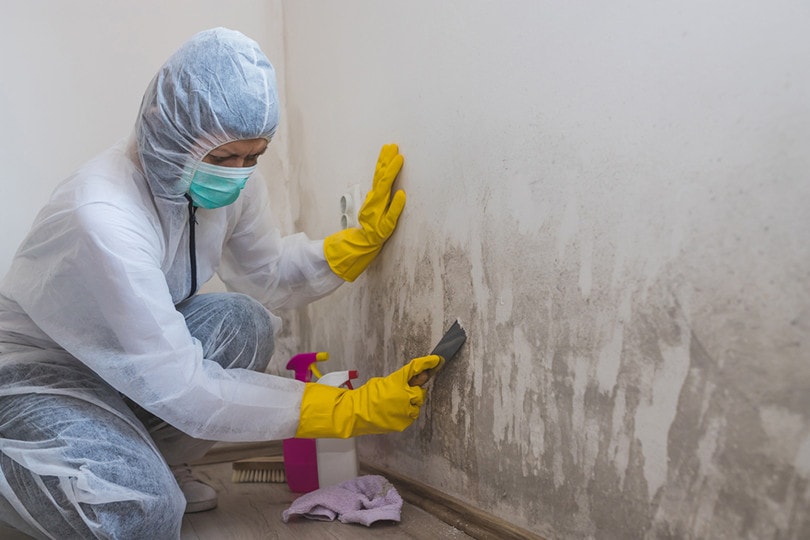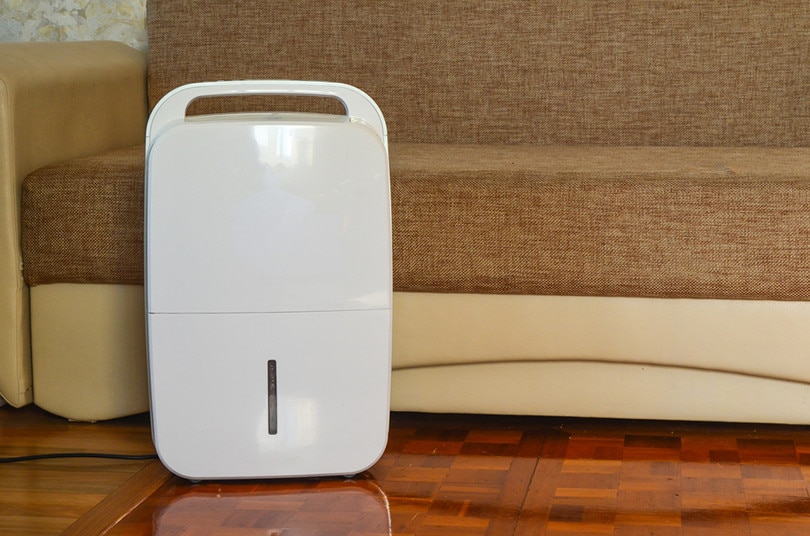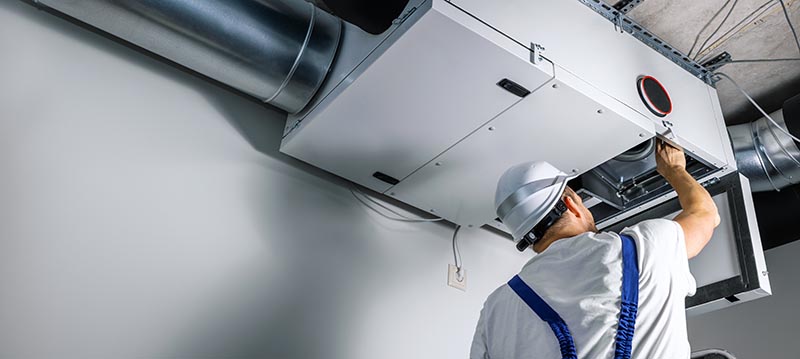How to Get Rid of a Musty Smell in Your Basement: 6 Easy Steps
-

- Last updated:

A leading offender in any home is a dank and stale smell. Such smells, like a wet dog or rotten wood, are common in the basements, and they signify a bigger problem. But did you know a musty smell is often a sign of mold or fungus problem?
While most mold species in homes are not hazardous to humans, some may cause allergies that manifest in headaches, coughing or wheezing, fatigue, runny nose, and itchiness. As such, it is essential to get rid of these smells in your house to avoid toxicity.
Keep reading to learn several ways of ridding and avoiding a musty smell in your basement.
Causes of Musty Smells
Understanding the causes of a musty smell in basements is crucial because they help us figure out the solutions:
- Mold and Mildew: The major drivers of a basement’s musty smell are mold and mildew. Both are often mistaken for each other, but they are essentially different. Mold develops a fuzzy, moss-like appearance that assumes different colors, ranging from black to dark green and gray. By comparison, mildew can either be gray or brown but eventually changes to a white powder. Both fungi thrive in warm and humid environments.
- Dampness: While it’s common knowledge that dampness causes mold and mildew, you should note that it can cause basement odor by itself. Moisture can accumulate in a basement due to several reasons such as leaking pipes, cracked walls, or damaged windows.
- Sewage: Sewer lines usually pass through the basement before connecting to the outside world. If your sewage line has improperly fitted pipes and liquid spills, they will certainly contribute to musty smells.
- Iron Ochre: This is a red-brown bacteria¹ that feeds on iron and produces a smell similar to that of rotten eggs. It also resembles slimy mud and often shows up in wet basements, especially on the walls and floors.
- Rodent Droppings: Rodent waste not only spreads diseases but is a primary cause of musty smells. Considering rodents love dark and less-busy areas, you’ll likely find their droppings in your basement.
The 6 Solutions to a Basement’s Musty Smell
Hopefully, you now have the culprit of the pungent smell in your house. The following guidelines will come in handy when getting rid of them:
1. Clean Mold and Mildew Spores

The best alternative to calling a professional is tackling the root issue yourself. Get rid of the existing mold and mildew spores and ensure you leave no trace or else the fungi will grow back and multiply.
Furthermore, remove all damp items in the basement, such as decorations, cardboard boxes, and papers and dispose of them—there’s no use cleaning them. You must also wash all affected clothing using hot water and tumble dry them if possible.
If the mold/mildew grows on furniture, you’ll need to spot-treat them, but you may be forced to replace them if the damage is extreme. Clean all affected walls and floors using bleach. If you have done all these but the mold still emerges again, call a professional to help you!
2. Fix All Leaks and Cracks
Leaks cause dampness, which is a primary cause of the musty smell and mold/mildew. That’s why you must fix any obvious leaks in your basement windows, pipes, or appliances.
Remember, you can successfully get rid of a musty smell, but without fixing the root causes such as leaks and cracks, you are only postponing the problem.
Scrutinize your basement and notice the wall cracks because they typically leak whenever it rains. If they are severe, you may need to excavate on the outside and install a waterproofing membrane. Alternatively, consider coating the interior with a water-resistant treatment. In addition, remove all stagnant water inside the basement.
3. Run a Dehumidifier
Another solution to a musty smell is to control the humidity inside your home. During the warm seasons, humidity levels inside the basement are typically higher than upper parts of your home because of the underground position. In that case, you can purchase a dehumidifier or desiccant pack to help you trap the airborne particles that cause the smell.

4. Conduct Deep Cleaning
In case a musty smell comes from your basement, yet you can’t find any mold or mildew, consider deep cleaning the entire area. This is especially sensible if you use your basement as a storage unit. When it’s super cluttered, the flow of air may be disrupted, thus causing the musty smell.
Use vinegar or baking soda to clean all furniture, hardwood floors, and other materials thoroughly.
- Begin by spraying vinegar on all surfaces. According to a study, vinegar kills 82% of mold species¹ while getting rid of musty smells. Wait for 20 minutes to allow the vinegar to act.
- Wipe away the surfaces using a clean towel and scrub the stubborn remnants using a stiff brush.
- Mix some water and baking soda and spray the solution on the floors and furniture to get rid of the musty smell. Ensure you cover the hard-to-reach areas.
- Allow the furniture to dry under sunlight for about 30 minutes.
If the smell is too stubborn, you can purchase stronger ingredients such as hydrogen peroxide, borax, chlorinated lime, tea tree oil, and bleach. Just ensure you don’t use them altogether or else you will create toxic fumes that may cause more damage and could be dangerous to your health or life.
5. Clean the Dryer Vent
This tip is specific to homeowners whose dryers are situated in the basement. Begin by cleaning from the outside (where the vent exits) all the way to the dryer’s base while removing all blockages that cause moisture build-up. Expect to find rodents while doing this because they find the lint and warm temperature great for multiplying.

6. Contact a Professional
If the above easy solutions don’t work, your best option would be to call a professional to deal with it. This is especially true if you have a history of experiencing allergies caused by mold and mildew.
While you can deal with it yourself, it is important to note that cleaning mold and mildew isn’t everybody’s strongest ability. Besides, a professional pest control company will fumigate your entire house to get rid of fungi you wouldn’t have noticed on your own. They can also help you tackle rodent infestation in your home, thus eradicating one of the major causes of musty smells
How to Keep That Musty Smell From Returning
After ridding your basement of bad smells, you must take extra steps to ensure the odor doesn’t occur again.
- Get Rid Of Darkness: Since mold and mildew thrive in dark places, it’s important to open all windows when the weather is dry to let in sunshine and fresh air.
- Remove Potted Plants: Avoid growing potted plants inside a basement that receives insufficient sunlight and air since the plants will contribute to excess moisture during respiration. The plants will also cause foul smells when they die and decay.
- Install Plastic Vapor Barriers: The role of plastic vapor barriers¹ is to prevent air from seeping through the doors, walls, and ceilings. This damp-proofing measure will save you lots of energy, time, and money you’d spend on dehumidifying and cleaning up the basement.

Conclusion
After reading through the article, we have learned that dampness is the primary cause of musty smells in basements. It also facilitates mold and mildew to thrive.
To rid your basement of that bad odor, you can contact a professional pest control company, do the cleaning yourself, fix the primary causes, or run a dehumidifier. Also, you can ensure the smell doesn’t return anytime soon by letting in sunlight and fresh air regularly, installing plastic vapor barriers, and getting rid of potted plants.
- Related Read: HOW TO GET RID OF MILDEW SMELL (GUIDE)
Featured Image Credit: Anatoli Igolkin, Shutterstock
Contents


